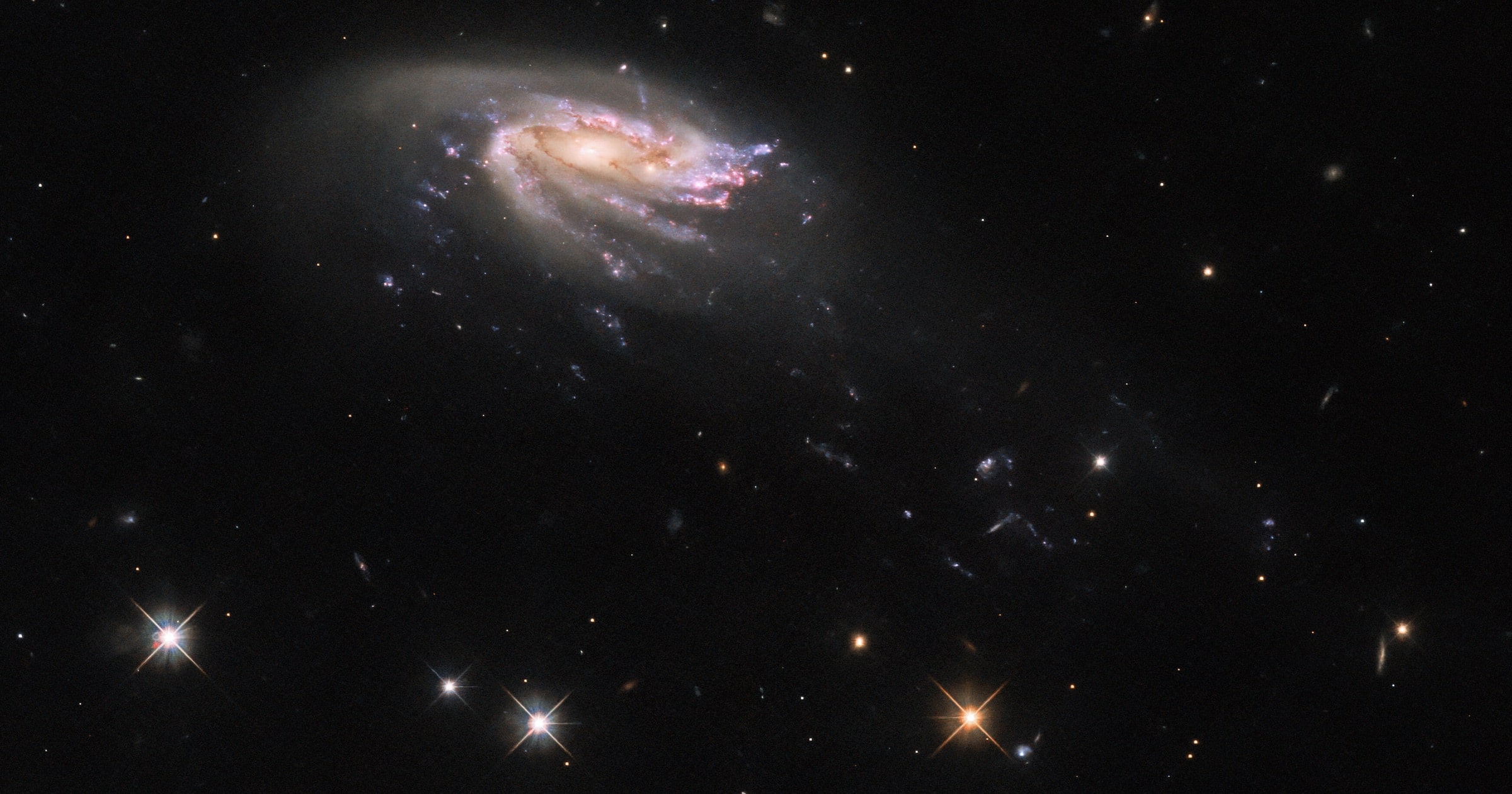 Intelligent Design
Intelligent Design
 Physics, Earth & Space
Physics, Earth & Space
Vilenkin: A Physicist in Flight from Intelligent Design

In his discussion with Robert Lawrence Kuhn at Closer to Truth, Tufts physicist and cosmologist Alexander Vilenkin addresses the question, “Is the Universe Fine-Tuned for Life and Mind?” Kuhn asks:
If the deep laws of the universe had been ever so slightly different human beings wouldn’t, and couldn’t, exist. All explanations of this exquisite fine-tuning, obvious and not-so-obvious, have problems or complexities. Natural or supernatural, that is the question.
Vilenkin — who is also a professor of evolutionary science — concedes the main point:
Alexander Vilenkin: [0:40] “Well yeah that’s right. It appears that the Universe is fine-tuned in the sense that there are about 30 constants of nature which take some specific value: if you look at these numbers, they look like totally random numbers. However, if you change these numbers even slightly, the properties of our universe would change quite dramatically so…”
Robert Lawrence Kuhn: “Generally for the bad.”
Alexander Vilenkin: “Yes, generally for the bad and the question is, what do we make of that?”
Vilenkin then introduces the idea that there might be a multiverse in which our universe, one of many, just happens to have these constants. But he admits that efforts to derive the 30 constants from a fundamental theory have failed [7:11]: “There is no question that despite tremendous effort to explain the constants of nature from fundamental theory, there is very little to show for that effort.”
But what about the more basic cosmological constant?
Should the Cosmological Constant be Close to Zero?
Vilenkin rejects the idea that the universe is designed, in part because the cosmological constant — a repulsive force that acts against gravity — does not have a “special value” like zero or nearly zero:
Alexander Vilenkin: [9:36] “It is hard to disprove that the value was selected by design but it does look like it is a product of entropic selection. The reason is that there is a range of values of the cosmological constant that is consistent with the formation of galaxies and evolution of life This is a narrow range which includes zero actually. And if it is a random selection (and) you have many regions with different values of this cosmological constant, we expect to find ourselves somewhere in the middle of that range. And this is actually what we observe. So what we observe is perfectly consistent with this such random entropic selection. On the other hand, if you think of design, I would think that design would choose some more special value, for example zero, and in fact if the value of the cosmological constant were fine-tuned, more for example much closer to zero than it is, it would be very hard to explain it through the multiverse hypothesis and that would be evidence against this hypothesis.”
What Is the Cosmological Constant?
It’s really hard to know. The constant is generally represented as an equation. But much about it is unclear. From science writer Adam Mann:
The cosmological constant is presumably an enigmatic form of matter or energy that acts in opposition to gravity and is considered by many physicists to be equivalent to dark energy. Nobody really knows what the cosmological constant is exactly, but it is required in cosmological equations in order to reconcile theory with our observations of the universe.
ADAM MANN, WHAT IS THE COSMOLOGICAL CONSTANT?, LIVE SCIENCE, FEBRUARY 16, 2021
Cosmologists use it, Mann says, because they “may not know what it is, but they know that they need it to make the universe make sense.” At Scientific American, it was described in 2021 as “physics’ most embarrassing problem.”
If We Don’t Know What It Is, How Do We Know It Should Equal Zero?
Experimental physicist Rob Sheldon writes to offers some thoughts:
The cosmological constant, also known as dark energy, arises from Big Bang models that have acceleration, where the expansion of the universe is speeding up with time. This is just one of many models of the universe. The observational data supporting this model was so lacking, a Nobel Prize was offered to anyone who could find evidence for it. Perlmutter, Reiss and Schmidt used 75 type Ia supernovae to argue that acceleration was there, and received the Nobel Prizein 2011. But Subhir Sarkhar used >2000 SNIa in a paper in 2021 to show that the acceleration was consistent with zero…
Not only is this “Dark Energy constant” not well supported theoretically (the simplest derivations are 120 orders of magnitude too big), it isn’t even well supported experimentally.
Rather than admit there is something wrong with the model (which shows the power of consensus thinking), Alexander Vilenkin argues for a multiverse to avoid a Designer. But in a multiverse, everything is possible, including Designers. So I really don’t see this as a logical atheistic solution. It reeks of terrified desperation.
So the arguments against the idea that our universe was designed amount to 1) a speculation that there might also be countless flopped universes out there; and 2) a claim that there is a cosmological constant that should equal zero but doesn’t. But the claims for a cosmological constant are not well supported theoretically.
If you are not an ideological materialist atheist, it would make more sense just to assume that our universe is designed because of the clear evidence for fine-tuning. All the rest is up for debate.
Cross-posted at Mind Matters News.
